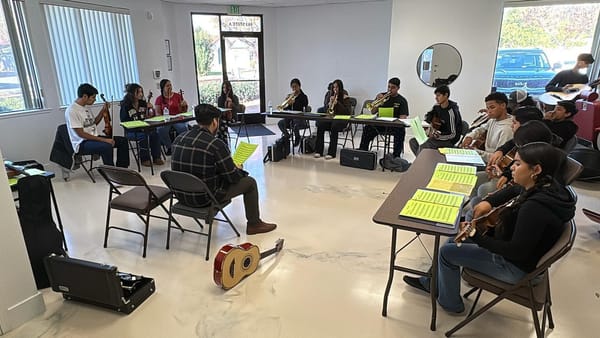Is Your Nonprofit Ready for an Endowment?
Discover how small and mid-sized nonprofits can establish endowments for long-term financial stability. Get expert tips and readiness tools from De Leon Tax Services.

In an era marked by economic uncertainty, political shifts, and a growing need for sustainable funding, small to medium-sized nonprofits are asking a crucial question: Should we establish an endowment? While often associated with large universities and major foundations, endowments can be a transformative financial tool for organizations of all sizes if implemented with intention, strategy, and proper infrastructure.
What Is an Endowment?
An endowment is a pool of financial assets, usually a charitable gift, that a nonprofit invests to generate long-term income. The original donation, referred to as the principal, is typically preserved, while investment earnings support the organization’s mission. Over time, the endowment grows, balancing income distribution with asset preservation to maintain generational equity.
According to the Legal Information Institute, an endowment is “a donation of money or property to a nonprofit organization, which uses the resulting investment income for a specific purpose” (Cornell Law). These funds can support general operations, scholarships, staff positions, or special initiatives, depending on the donor’s intent.
Why Now?
We are in the midst of what economists are calling the greatest wealth transfer in history. By 2045, Americans are expected to pass down $84 trillion in assets, up to $12 trillion of which may go to nonprofits. But this windfall will not be distributed equally. Only organizations with the foresight and structure to receive these gifts will benefit.
At the same time, nonprofits are facing increasing volatility: cuts to public funding, changing donor expectations, inflationary pressure, and market disruptions. A well-managed endowment provides stability, credibility, and the flexibility to pursue bold initiatives without relying entirely on annual fundraising or grant cycles.
The Benefits of Endowment
For nonprofits, endowments offer long-term financial resilience. Even a modest fund can produce predictable annual income and send a signal of professionalism and permanence to donors and funders. An endowment can support key programs, attract planned gifts, and serve as a hedge against inflation or unexpected financial downturns.
For donors, contributing to an endowment represents an opportunity to leave a lasting legacy and ensure their values endure. It aligns with the growing interest in planned giving and impact-driven philanthropy.
As Laura MacDonald explains in The Endowment Handbook, “An endowment of $1 million that provides $45,000 annually can over time return the full philanthropic investment while continuing to fuel a program forever” (MacDonald, 2024).
Not So Fast: Is Your Organization Ready?
An endowment isn’t a quick fix or a guaranteed revenue stream. Without a clear foundation, it can become a source of confusion or even financial risk.
Before launching an endowment, organizations should assess their readiness in three key areas:
- Governance: Are your board members aligned and prepared to oversee long-term financial strategies? Do you have policies for investment, gift acceptance, and spending?
- Leadership: Is your leadership team stable and strategic? Are they prepared to communicate the value of endowment to donors?
- Fundraising Infrastructure: Do you have strong donor relationships, a compelling case for support, and the ability to steward legacy gifts?
The Endowment Readiness Test (MacDonald, 2024) provides a helpful benchmark. A score of 70 or above is typically needed to launch a successful endowment campaign. If your organization falls below this threshold, it may be wise to start with strategic reserves or donor-advised funds as you build capacity.
Endowment vs. Reserves: Know the Difference
It’s important to distinguish between endowments and reserves. While both provide financial resilience, they serve different purposes:
- Endowments are permanent and invested for perpetual return. They require legal documentation and often carry donor restrictions.
- Reserves are flexible and typically unrestricted. They provide liquidity for operating shortfalls or strategic opportunities and are often a first step before creating a formal endowment.
Examples of Endowments in Action
Endowments are not reserved for elite universities. Local organizations, community foundations, regional theaters, food banks, and even small scholarship funds are using endowments to stabilize funding and plan for the future.
For example, the Community Foundation for Monterey County helps manage endowment funds for dozens of local nonprofits. Similarly, institutions like Howard University and Morehouse College are growing their endowments to support scholarships, capital projects, and community programs.
Final Thoughts
Endowments are more than financial tools; they are commitments to the long-term success of your mission. They require foresight, discipline, and a shift from a survival mindset to one of abundance and stewardship.
If your organization is considering whether now is the right time to pursue an endowment, we would like to encourage you to start by evaluating your readiness. At De Leon Tax Services, we help nonprofits of all sizes prepare the structural foundation needed to support and grow endowed funds. From policy development to compliance and planning, we’re here to help.
Ready to get started? Contact us for a consultation.
Sources
- Cornell Law School Legal Information Institute. “Endowment.” https://www.law.cornell.edu/wex/endowment
- BYU Financial Services. “Endowment Type Definitions.” https://finserve.byu.edu/endowments-gifts/endowment-type-definitions
- MacDonald, Laura. The Endowment Handbook. John Wiley & Sons, 2024.
- National Council of Nonprofits. “Gift Acceptance Policies.” https://www.councilofnonprofits.org/running-nonprofit/fundraising-and-resource-development/gift-acceptance-policies
- Association of Governing Boards. “Endowment Management for Foundations and Nonprofits.” https://agb.org
- Giving USA. Leaving a Legacy: A New Look at Planned Giving Donors. 2019.



